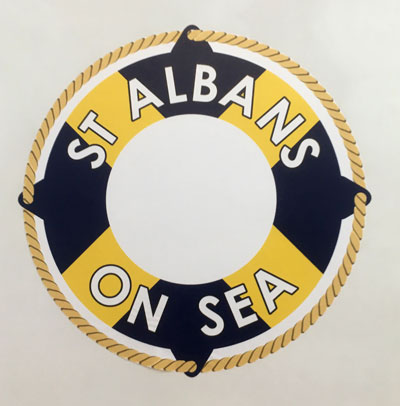
 HMS VERULAM (1917)
HMS VERULAM (1917)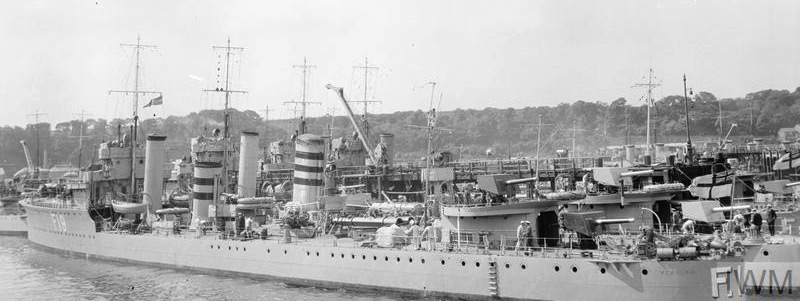 |
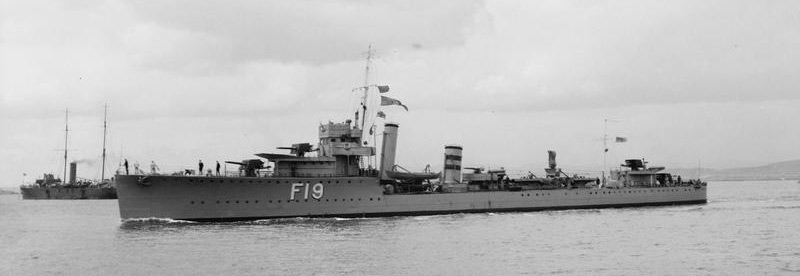 |
Commanding Officers
| Cdr Ralph W. Wilkinson, RN (21 November 1917 – 31 December, 1918) Lt Cdr Guy L. Warren (15 April, 1919 – 4 September, 1919) (vessel lost under his command) |
Officers
| Sub Lt Charles F.B. Arthur RN (8 July 1918 - ?) Mid Percy Ashe (31 Jan 1919 - ?) Mid Alexis William Ashley RN (? - 4 Sept 1919) MPK Sub Lt Edgar Charles Cookson RN (5 Feb - 4 Sept 1919) MPK Mid Arthur Wilfred Edgecombe RN (? - 4 Sept 1919) MPK Lt Francis C. Flynn RN (24 Nov 1917 - ?) |
Mid Ean C.C. Greenlees (31 Jan 1919 - ) Lt(E) Joseph House DSC RN (21 May 1918 - 4 Sept 1919) MPK Gunner(T) George T. Jebbett (8 Nov 1917 - 4 Sept 1919) Lt Charles Cunningham Dumville-Lees RN Sub Lt William T. Own RNVR (30 May 1918 - ?) Sub Lt Owen P. Powell RN (22 June 1918 - 4 Sept 1919) MPK |
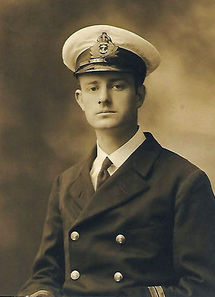
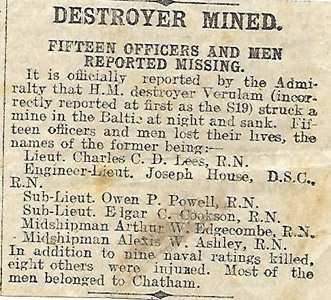 Charles
Cunningham Dumville-Lees was born on 20 March 1894 at the village of
Trefonen in Shropshire near the Welsh border three miles from Oswestry.
He was the youngest son of George John Dumville Lees and Ann Dove
Dumville Lees. George's father had bought Woodhill, a country
mansion, in 1852 having made his fortune in the cotton and wool
trade in Lancashire.
Charles
Cunningham Dumville-Lees was born on 20 March 1894 at the village of
Trefonen in Shropshire near the Welsh border three miles from Oswestry.
He was the youngest son of George John Dumville Lees and Ann Dove
Dumville Lees. George's father had bought Woodhill, a country
mansion, in 1852 having made his fortune in the cotton and wool
trade in Lancashire. 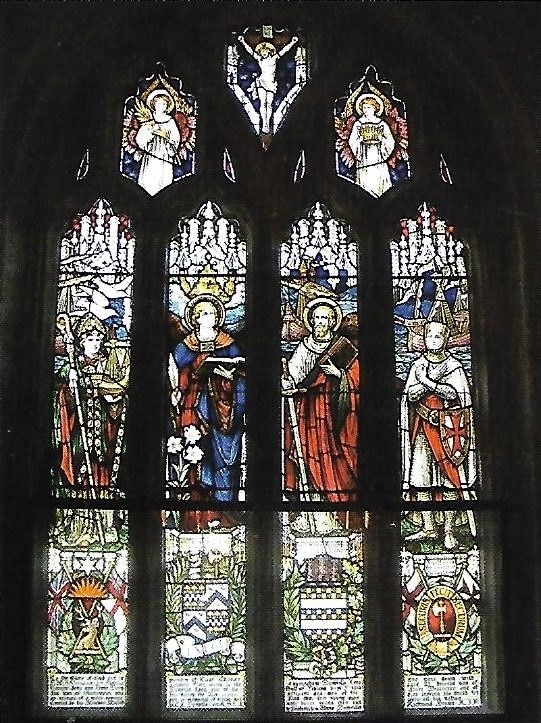
| 1.
ASHLEY, ALEXIS WILLIAM (18), Midshipman, HMS Verulam, Royal Navy,
†03/09/1919, Son of John George and Frances Amelia Ashley, of Lincoln
House, Fairfax Rd., Teddington, Middx, Memorial: Chatham Naval Memorial
2. BOULTON, JOHN (20), Able Seaman (no. J/45039), HMS Verulam, Royal Navy, †03/09/1919, Son of Frederick and Elizabeth Boulton, of Wood Farm, Flixton, Bungay, Suffolk, Memorial: Chatham Naval Memorial 3. CLARK, THOMAS JOSEPH (23), Stoker 1st Class (no. SS/117078), HMS Verulam, Royal Navy, †03/09/1919, Son of Mary Ann E. Martin, of 192, Queen's Rd., Plaistow, London, Memorial: Chatham Naval Memorial 4. COOKSON, EDGAR CHARLES (19), Sub-Lieutenant, HMS Verulam, Royal Navy, †03/09/1919, Son of George and Sarah Elizabeth Cookson, of 2, Northcote Rd., Clifton, Bristol, Memorial: Chatham Naval Memorial 5. EDGECOMBE, ARTHUR WILFRID (18), Midshipman, HMS Verulam, Royal Navy, †03/09/1919, Son of Wilfrid Edgecombe, M.D., and Jane Edgecombe, of 17, Victoria Avenue, Harrogate. Served 2 years in H.M.S. Agamemnon in the Mediterranian, 1917-1918, Memorial: Chatham Naval Memorial 6. ELLIOTT, JOHN (27), Stoker 1st Class (no. K/13388), HMS Verulam, Royal Navy, †03/09/1919, (Buried Styrsudd Point Cemetery), Memorial: Archangel Memorial 7. HOUSE, JOSEPH (40), Engineer Lieutenant, D S C, HMS Verulam, Royal Navy, †03/09/1919, Husband of Mrs. House, of 25, Siss Rd., Southsea, Hants. Born at Portsmouth. (Buried Styrsudd Point Cemetery), Memorial: Archangel Memorial 8. JACKSON, ARTHUR FREDERICK (21), Able Seaman (no. J/41800), HMS Verulam, Royal Navy, †03/09/1919, Son of William Walter and Dora Mary L. Jackson, of 25, Pember Rd., Kensal Green, London, Memorial: Chatham Naval Memorial |
9.
JARVIS, HAROLD WILLIAM , Leading Stoker (no. K/488), HMS Verulam, Royal
Navy, †03/09/1919, Husband of Ada Jarvis, of 70, Belmont Park Rd.,
Leyton, London, Memorial: Chatham Naval Memorial 10. KING, WILLIAM (42), Chief Stoker (no. 286715), HMS Verulam, Royal Navy, †03/09/1919, Husband of Ethel May King, of 21, Gwynne Rd., Dovercourt, Essex, Memorial: Chatham Naval Memorial 11. LEES, CHARLES CUNNINGHAM DUMVILLE (25), Lieutenant, HMS Verulam, Royal Navy, †03/09/1919, Son of George John Dumville Lees and Anne Dove Dumville Lees, of The Manor House, Fowley Cross, Okehampton, and Woodhill, Oswestry, Salop. Memorial: Chatham Naval Memorial 12. PARSONS, RANDALL ROBERT (28), Leading Seaman (no. 238893), HMS Verulam, Royal Navy, †03/09/1919, Son of George Alfred Parsons, of 8, Crampton Rd., Penge; husband of Lavinia Parsons, of 8, Crampton Rd., Penge, London, Memorial: Chatham Naval Memorial 13. PENDRILL, REGINALD JOYCE , Able Seaman (no. J/38465), HMS Verulam, Royal Navy, †03/09/1919, Son of Mrs Martha E Pendrill of 46 Neath Road, Ilford, Essex, Memorial: Plymouth Naval Memorial 14. POLLEY, FRANK ALFRED RICHMOND (21), Able Seaman (no. J/32369), HMS Verulam, Royal Navy, †03/09/1919, Son of Albert Henry and Annie Caroline Polley, of 196, Woodhouse Rd., North Finchley, London, Memorial: Chatham Naval Memorial 15. POWELL, OWEN PHILIP (21), Sub-Lieutenant, HMS Verulam, Royal Navy, †03/09/1919, Son of Owen Markham Powell and Harriet Powell, of Harmer Green, Welwyn, Herts. (Buried Styrsudd Point Cemetery), Memorial: Archangel Memorial 16. RUFFELL, WILLIAM FREDERICK (19), Ordinary Telegraphist (no. J/84918), HMS Verulam, Royal Navy, †03/09/1919, Son of Charles S. and Rose Anna Ruffell, of 20, Surrey Grove, Surrey St., Norwich, Memorial: Chatham Naval Memorial |
